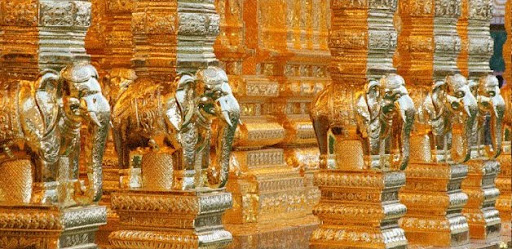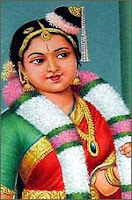
Berijam Lake is a reservoir near Kodaikanal town in Dindigul district of Tamil Nadu, South India. It is at the old site of "Fort Hamilton", in the upper Palani hills. The lake, created by a dam with sluice outlets, is part of a micro–watershed development project. Periyakulam town, 18.7 kilometers (12 mi) to the SE, gets its public drinking water from the lake. The lake’s water quality is excellent.
AccessBerijam is located at the end of Pillar Rocks Road (old SR-18), 21 km (13.0 mi) southwest of Kodaikanal Lake. map There were two roads from Berijam, the Kodaikanal–Munnar Road to Munnar town, about 40 km (24.9 mi) west and another going to Kavunji village, 9 km (5.6 mi) north. The old roads are now overgrown with vegetation and used as walking trails by local villagers and trekkers. Encounters with wild animals including bison, elephants and leopards sometimes occur on these trails.
The Tamil Nadu Forest Department has restricted entry into the Berijam Lake area to between 9.30 a.m. and 3 p.m. for the general public. You have to apply for an entry permit (free) in person at the Forestry Department Office in Kodaikanal. Only a limited number of visitors are allowed in the park each day, so go early to get the permit. There is a forest check–post which prohibits unauthorized entry through the road leading to Berijam Lake. Beyond km marker 13 on the Berijam road there is an observation tower from where one may have a fine view of Berijam Lake and the surrounding forest.
Berijam has a Forest Department Camp including an Eco-Education Center for visitors. Nature areas to be visited here include: swamp ecosystem, fresh water ecosystem, nature trail, bridge, medicinal demonstration garden, museum, nature walk, grassland and shola.(guide map)
Site visits are organized for authorized researchers. Trekkers can get permission to stay overnight. There is a Forest Rest House with limited accommodations which serves as an overnight base camp for Forestry Department staff, researchers and trekkers. Visitors must bring their own provisions.
HistoryThere was originally a swamp here known as the Berijam swamp. The previous existence there of a large lake, the evidence which was visible near by, was first recorded in 1864 by Colonel Douglas Hamilton of the 21st Regiment of the Madras Native Infantry. No record or even tradition regarding the formation of this ancient lake survives. However, Judging from the traces of its shoreline which still remained in 1906, it must have been nearly 5 mi (8 km) long, up to 3,960 ft (1,210 m) wide and up to 70 ft (21 m) deep. It was apparently formed by the side of a hill slipping down into a valley which slopes northwards to the Amaravati River, and damming up the stream which ran at the bottom of it. This stream apparently eventually cut its way through the huge natural embankment so formed, and thus emptied the lake this landslide had once created. The dam was about 600 ft (180 m) long and the breach in it was about 300 ft (91 m) across and 90 ft (27 m) deep.
In 1864, Colonel Hamilton submitted a report stating that the Berijam Lake area was the best site in the Palani Hills for a military cantonment or Sanatorium. A military outpost later built here, Fort Hamilton, was named for him. There was in fact no ' fort' at the place, only a small hut.
Berijam lake was artificially created in 1867, when Sir Vere Levigne, Collector of Madurai, donated part of his personal retirement for building the dam. Subsequently, the scheme was enlarged to supply drinking water to the Periyakulam Municipality and completed in 1912 at a cost of US $138,500.
Berijam has a 100 year old 2–story brick building, partly damaged and blackened over the years, with a bright yellow painted name reading "Britisher's Transit Camp". This is one of several transit camps built every 15 km (9 mi) for the soldiers to rest along the 230 km (143 mi) British “Escape Route” from Kodaikanal via Top Station and Munnar to Kochi, built during WW 2. While most of the transit camps are now either dilapidated or demolished, the one at Berijam still stands.
Berijam Lake has been studied palynologically and it revealed a 20,000 years story deposited in the sediments. Time span between 20,000-17,000 years before present (B.P.) experienced the cold and dry climatic conditions. After this period an oxidizing arid environmental conditions were prevailed for a period of 2500 years. The time span between 14,500-7000 years B.P. has witnessed a climatic amelioration phase leading to warm and humid climate. From about 7,000 years B.P. to present the area is under the cool and humid climate.
























